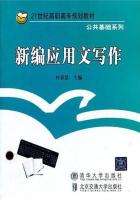The heat that disappears is called tied-up. If, by cooling, the steam is again transformed into water, and the water, in its turn, into ice, the same quantity of heat as was previously tied up is now again set free , i.e., can be felt and measured as heat. This setting free of heat on the condensation of steam and the freezing of water is the reason why steam, when cooled to 100°, is only gradually transformed into water, and why a mass of water of freezing point temperature is only very gradually transformed into ice. These are the facts. The question is, what happens to the heat while it is tied up?
The mechanical theory of heat, according to which heat consists in a greater or lesser vibration, depending on the temperature and state of aggregation, of the smallest physically active particles (molecules)of a body -- a vibration which under certain conditions can change into any other form of motion -- explains that the heat that has disappeared has done work, has been transformed into work. When ice melts, the close and firm connection between the individual molecules is broken, and transformed into a loose juxtaposition; when water at boiling point becomes steam a state is reached in which the individual molecules no longer have any noticeable influence on one another, and under the influence of heat even fly apart in all directions. It is clear that the single molecules of a body are endowed with far greater energy in the gaseous state than they are in the fluid state, and in the fluid state again more than in the solid state.
The tied-up heat, therefore, has not disappeared; it has merely been transformed, and has assumed the form of molecular tension. As soon as the condition under which the separate molecules are able to maintain their absolute or relative ******* in regard to one another ceases to exist -- that is, as soon as the temperature falls below the minimum of 100° or 0°, as the case may be, this tension relaxes, the molecules again press towards each other with the same force with which they had previously flown apart;and this force disappears, but only to reappear as heat, and as precisely the same quantity of heat as had previously been tied up. This explanation is of course a hypothesis, as is the whole mechanical theory of heat, inasmuch as no one has up to now ever seen a molecule, not to mention one in vibration.
Just for this reason it is certain to be full of defects as this still very young theory is as a whole, but it can at least explain what happens without in any way coming into conflict with the indestructibility and uncreatability of motion, and it is even able to account for the whereabouts of heat during its transformations. Latent, or tied-up, heat is therefore in no way a stumbling-block for the mechanical theory of heat. On the contrary, this theory provides the first rational explanation of what takes place, and it involves no stumbling-block except in so far as physicists continue to describe heat which has been transformed into another form of molecular energy by means of the term "tied-up", which has become obsolete and unsuitable.
The self-equal states and conditions of rest in the solid, in the liquid and in the gaseous state of aggregation therefore represent, to be sure, mechanical work, in so far as mechanical work is the measure of heat. Both the solid crust of the earth and the water of the ocean, in their present aggregate states, represent a definite quantity of heat set free, to which of course corresponds an equally definite quantity of mechanical force. In the transition of the gaseous ball, from which the earth has developed, into the liquid and subsequently into the largely solid aggregate state, a definite quantity of molecular energy was radiated as heat into space. The difficulty about which Herr Dühring mumbles in his mysterious manner therefore does not exist, and though even in applying the theory cosmically we may come up against defects and gaps -- which must be attributed to our imperfect means of knowledge -- we nowhere come up against theoretically insuperable obstacles. The bridge from the static to the dynamic is here, too, the external impulse -- the cooling or heating brought about by other bodies acting on an object which is in a state of equilibrium. The further we explore this natural philosophy of Dühring's, the more impossible appear all attempts to explain motion out of immobility or to find the bridge over which the purely static, the resting, can by itself pass to the dynamic, to motion.
With this we have fortunately rid ourselves for a time of the self-equal primordial state. Herr Dühring passes on to chemistry, and takes the opportunity to reveal to us three laws of nature's inertness which have so far been discovered by his philosophy of reality, viz.:
(1) the quantity of all matter in general, (2) that of the ****** (chemical)elements, and (3) that of mechanical force are constant {D. Ph. 97}
Hence: the uncreatability and indestructibility of matter, and also of its ****** component parts, in so far as it is made up of such, as well as the uncreatability and indestructibility of motion -- these old facts known the world over and expressed most inadequately -- is the only positive thing which Herr Dühring can provide us with as a result of his natural philosophy of the inorganic world. We knew all this long ago. But what we did not know was that they were "laws of inertness" and as such "schematic properties of the system of things". We are witnessing a repetition of what happened above to Kant: Herr Dühring picks up some old familiar quip, sticks a Dühring label on it, and calls the result:
"from the ground up original conclusions and views ... system-creating ideas {525} deep-rooted science" {200, 219; D. C. 555-56}.















